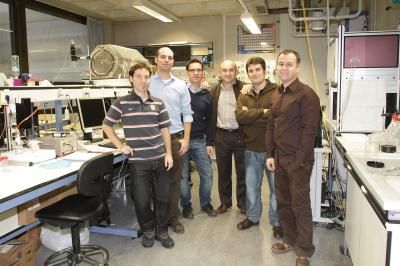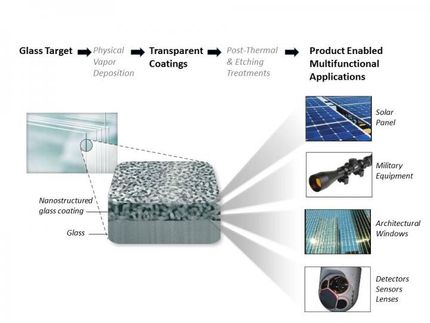Coatings with nanoparticles that interact with sunlight and eliminate contaminants are developed
Advertisement
Researchers of the UPNA-Public University of Navarre have developed a type of coating for construction materials. It is based on nanoparticles that interact with sunlight and trigger a chemical reaction that eliminates certain air pollutants. It is reckoned that the reduction in atmospheric pollution could be 90% of nitrogen oxides, 80% of hydrocarbons, and 75% of carbon monoxides emitted. These coatings are the final result of the Ecofotomat project in which the L'Urederra R+D Centre and the construction company Obras y Servicios TEX S.L. have participated together with the University.
As the researcher Javier Goicoechea explains, the coatings "have special nanoparticles with a photocatalytic effect; the nanoparticles interact with the light, thus triggering a series of chemical reactions that clean the air and break down the dirt". In this project, work is being done with concrete as the basic construction material. L'Urederra manufactures the nanoparticles and adapts them so that they can be incorporated into the coatings, and the company TEX provides the concrete and the technical specifications on the building material, since the final aim of the project is to obtain a marketable product: "There are ceramics that have these types of coatings, but here we are working with concrete and with liquid solutions, because we want the final coating to resemble a paint as much as possible: one that can be applied on site, has a cost that is not too high, and is sufficiently tough to withstand the elements."
In Goicoechea's view, "the good thing is that we are talking about very thin coatings of less than a micron and which adapt very well to the profile of the material. For example, concrete is always very porous and this coating will cause the whole porous surface to become active when the sunlight hits it." What is more, the coating is also capable of degrading certain chemical compounds that become attached to the surface, and that way the spread of bacteria, fungi, etc. is hampered.

Pictured from left to right are the researchers Aitor Urrutia, Javier Goicocechea, Miguel Hernáez, Ignacio Matías, Patxi Arregui and Pedro Rivero.
UPNA
Toughness and testing
As regards toughness, the coating consists of an inorganic material. "This is not like when one speaks about coatings with an antibacterial agent that is gradually released, and the moment comes when it runs out, and consequently stops working," explains the researcher. What we are talking about here is a material that has a built-in property: when the sunlight hits it, it produces free radicals on its surface that attack the air pollutants, specifically the monoxides and the nitrogen oxides. What we need to come up with is a matrix that is tough and permanent enough to immobilise those nanoparticles on the surface and which ensures that the coating remains in place; and all that at an affordable cost."
The UPNA's team of researchers who have worked on the project is made up of Pedro Rivero, chemist; Natxo Matías and Miguel Hernáez, telecommunications engineers; and Patxi Arregui and Javier Goicoechea, industrial engineers. As they did not have a laboratory available to measure the reduction in gases, they conducted a standard test consisting of applying a bluish ink onto the surface of the concrete to which the coating was then applied. "When the concrete is exposed to the light, it is possible to see how the ink is destroyed on the area treated with the coating while remaining virtually intact on the remaining surface. When the ink is broken down, we can estimate that when the light hits the surface, the coating acts and breaks down all the pollutants present in the air in the form of compounds attached to it," they said.
Ecofotomat has been partly funded by the Spanish Ministry for the Economy and Competitiveness and by the European Regional Development Fund. The execution period is due to end in June 2013 even though the work of the UPNA researchers in the project has already finished. This project comes within the framework of the INNPACTO programme called by the Ministry to encourage the setting up of projects in which research bodies and companies co-operate. Specifically, the aim is to jointly run R+D+i projects that encourage innovative activity, mobilise private investment and create jobs.
"What would be ideal would be a second phase of this project to be able to go further," concludes Javier Goicoechea. Our work has consisted of developing different matrices that would be cheap and tough, because in construction we are always talking about very low margins, reduced costs and guarantees of twenty to thirty years. What we need, for example, is a complete façade to which the coating can be applied to see how it works, although if we want to see genuine ageing, time would have to elapse or we would have to carry out some kind of accelerated life test to see which of the coatings keeps going the longest and, perhaps, which coating is the most suited to a more or less extreme climate.
































































